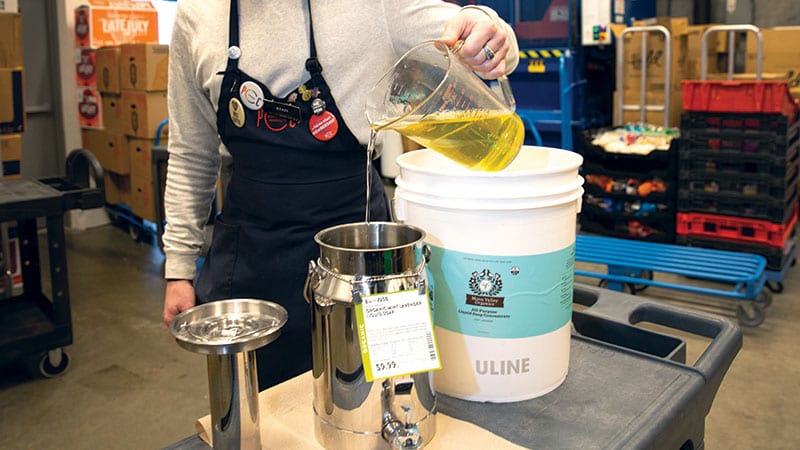Sustainability Report: Our journey to zero waste
This article was originally published in May 2021

Landfills are one of the most environmentally harmful ways to dispose of waste, and that holds especially true for organic materials. Food scraps can take years to decompose in the oxygen-deprived environment; a 10-year old carrot pulled out of the landfill can look virtually the same as a fresh carrot pulled from the garden. Fortunately, there are many ways that we can divert waste from landfills and cycle it back into the supply chain through composting and recycling.
Taking advantage of these opportunities, PCC diverted 83% of waste from entering landfills in 2020, bringing us close to our five-year goal of zero waste to landfill, defined as diverting 90% or more, by 2022. Here’s a behind-the-scenes look at what’s happening in our stores to achieve this goal:
Our first priority is reducing the amount of waste that we generate. For example, PCC’s West Seattle store is using a “closed loop” system in its Health and Body Care department, where containers used to ship bulk offerings to the store are returned to manufacturers to be cleaned and reused instead of being discarded in recycling. You can read more about this innovative system here.
PCC store staff then diligently sort generated waste into five separate streams—mixed recycling, cardboard recycling, industrial composting, pallet wrap recycling and landfill waste. Three of our stores even have a sixth stream, WISErg, an on-site digestor that breaks down food scraps and processes them into organic fertilizer. We’re particularly excited about our pallet wrap recycling program. We accumulate a lot of pallet wrap, a plastic film used to secure products to pallets that are delivered to our stores. Since municipal recycling facilities can’t process this wrap, it was originally destined for the landfill. Instead, we partnered with a distributor whose trucks were already making deliveries to our stores to take the pallet wrap back to their distribution centers, which are equipped to recycle it. Not only does this divert material from the landfill and into recycling, but it also reduces fossil fuel emissions by not requiring a separate trip to collect this material.
Our work doesn’t stop there. We continue to explore innovative ways to reduce our stores’ garbage loads and divert more materials into recycling, such as waxed cardboard and other types of plastic film, as we continue to progress toward our goals.
A lot of these zero waste strategies can be replicated at home. Check with your local municipality to make sure you’re taking advantage of recycling and industrial composting services offered in your area. Some businesses and retailers offer free take-back programs for hard-to-recycle materials like used electronics and worn-out clothing. Have some fun with it this summer by weighing and tracking your household waste for a week or two (we do a version of this in our stores!) and challenging yourself to reduce your garbage loads. You’ll be surprised how many pounds and, potentially, dollars, you can shed from your garbage bill.
